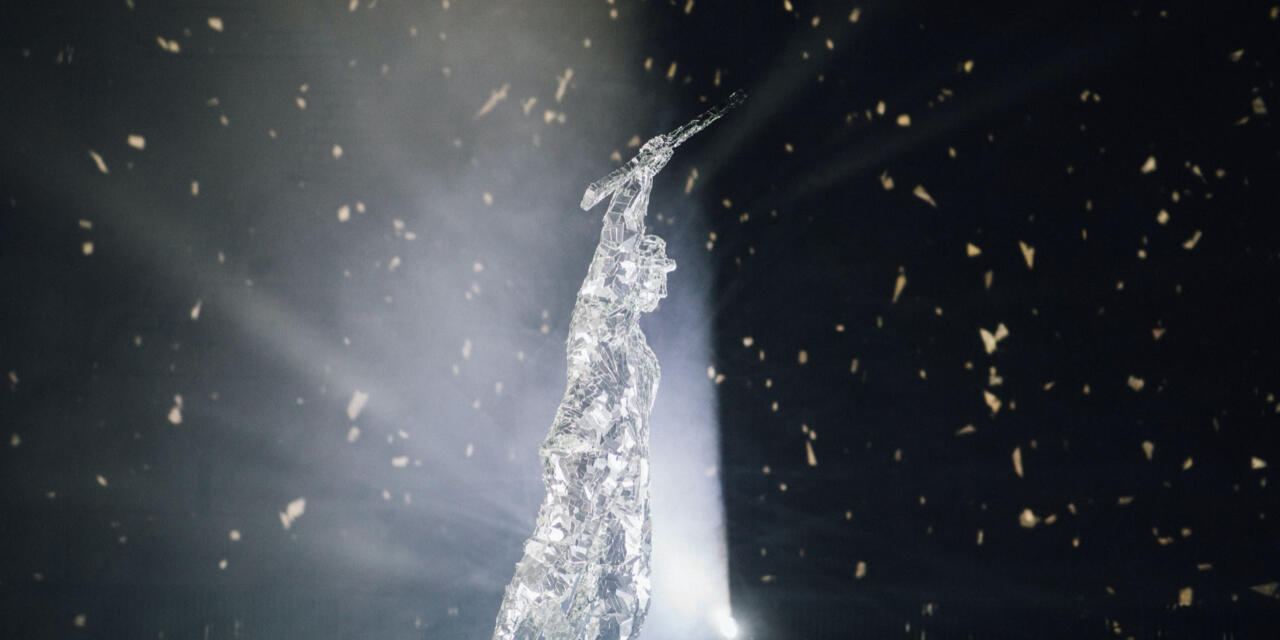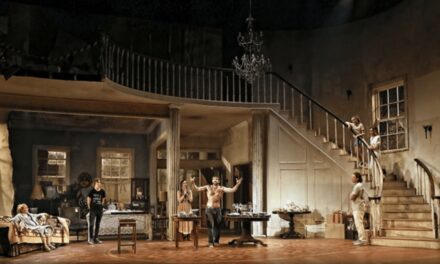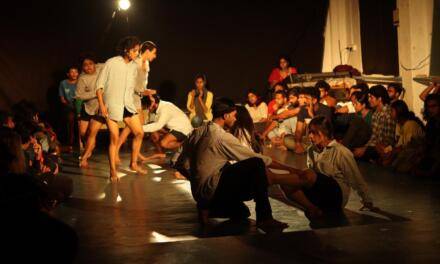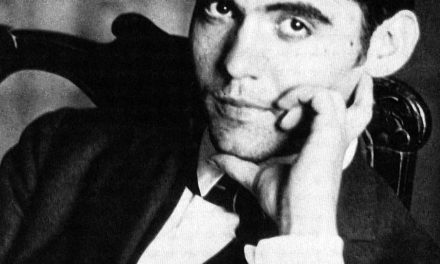Is this the first memorial disco theatre piece of its kind in modern theatre? Well, it’s a disco all right. The traditional disco ball is replaced by a rotating Husino Miner, a sculpture of a revolutionary miner dropping his pick for a rifle made out of glass. And this Husino Miner isn’t even real. The real one is a commemorative statue in a small village, Husino, Tuzla, in Bosnia and marks the workers’ revolution in the 1920s which was violently put down by the ex-Yugoslavian state. Today, the uprising is considered part of Tuzla’s continued anti-authoritarian stance and is an enduring symbol of working class struggles against injustice and oppression.
There are no dancers or actors in this 30-minute piece. The only “performer” is the owner of a disjointed voice which recites poetic socialist “isms” about revolutions, big corporations and workers’ rights down the speakers to an already converted audience. But the show is not as simple as this.
The actor-less stage backgrounded by electronic music and 1980s pop hits is possibly also a deconstruction of Peter Brook’s notion of the empty space and the power of art. The flashing glass sculpture of the miner becomes a vehicle for the audience’s projections and reflections. One can think of the tragedy that befell the ordinary citizens protesting for the most basic of rights and on the art of revolution – precisely the art of theatrical revolution – and how such revolutions are going to be needed in the future. The memorial back in Bosnia is apparently uncared for and forgotten – the communities of people who once might have attended it has moved; emigrated in search of better opportunities. Theatre has instead, become the medium by which it and all workers’ revolutions everywhere, are remembered.
In between the speeches down the speakers, long silences permeate eerily. The silences emphasize the empty space and stage around the rotating miner – it is both artistic and real. The audience, who sits facing the miner, is kept steadfastly stuck in their seats.
After the show, there was much discussion about how the piece would work better as a site-specific interactive installation or as a gallery piece. But this would deny the main points the show is making and which links it intrinsically to the theatrical space. The first is that the original memorial is lost and forgotten, and therefore, so are its lessons. Where else better to show this than at a dancer-less disco in a theatre? And where better to remind audiences of the power it has? The second is that what it represents cannot be touched by anyone and that by having it in a theatre in a traditional proscenium set-up, reinforces the idea that it is a moment in history we can think about but can’t return to or be with. We can only imagine what it means for the future, which is as changeable – and perhaps as strangely optimistic – as the light sparkling off the glass fragments of the miner himself.
This post was written by the author in their personal capacity.The opinions expressed in this article are the author’s own and do not reflect the view of The Theatre Times, their staff or collaborators.
This post was written by Verity Healey.
The views expressed here belong to the author and do not necessarily reflect our views and opinions.


















